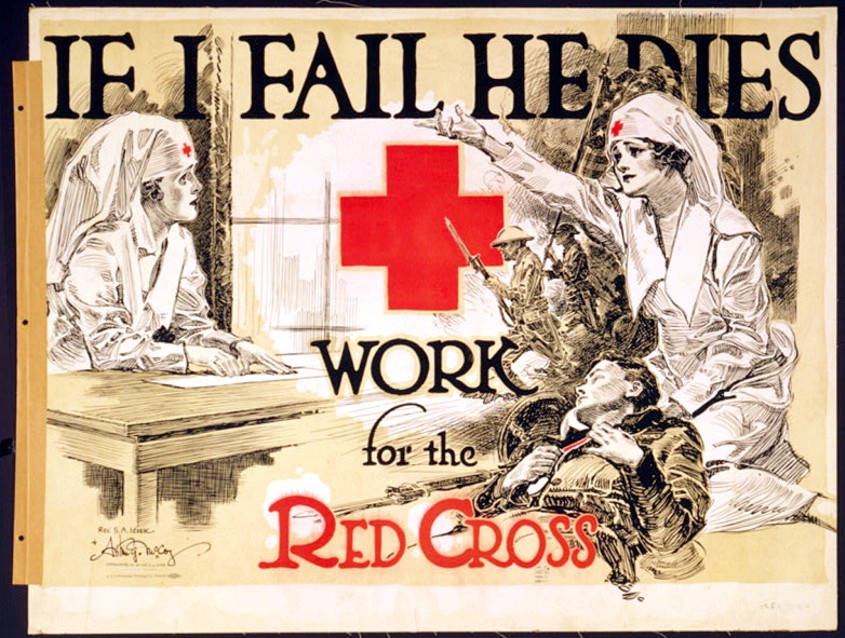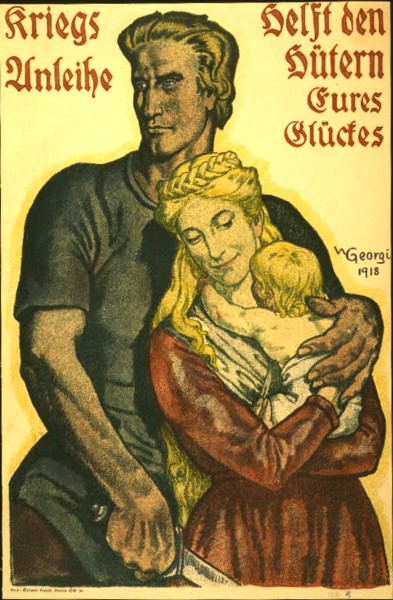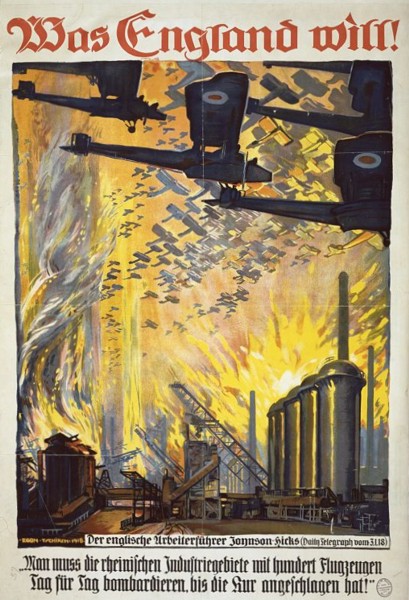The most
famous WW I poster
This is the most famous American poster of World War I. It was created by a artist named James Flagg in 1917. Millions of copies were printed as part of the effort to get men to volunteer for service in the U.S. Army. Posters became an important way for the government to encourage public support for the war effort. Remember, TV had not been invented, and there were no broadcast radio stations until the 1920s. When a government uses any medium, such as posters, TV, or even the Internet, to influence public opinion or action, that is called propaganda. Propaganda can be good or bad, depending on the message and the circumstances. This poster was considered by most people to be something good and even inspirational. Today antique collectors will pay a very high price for an original copy of this poster. |
|
Posters for
conserving food
These are examples of propaganda posters printed by the government that asked Americans to conserve (to save, not waste) food. The U.S. sent millions of tons of food supplies to help the other Allied Powers during the war. Most people would say these are examples of good propaganda for a good purpose. |
 |
 |
|
An appeal
to women
This poster calls on women to become nurses to help wounded soldiers. The women are shown as strong, capable, and heroic. It was propaganda, but most people would call it both good and true propaganda. Women nurses were indeed strong, capable, and heroic in World War I. They did save countless lives, just as the poster shows. |

|
Unfair
propaganda posters . . . or not?
Sometimes, propaganda posters were used to stir up fear and even hatred of the other side. Here are two examples printed by the U.S. government during the war. These posters encouraged people to buy Liberty Bonds (war bonds). War bonds are certificates sold by the government to the public during a war. That raises money to help pay for the enormous expense of the fighting. After the war, the government pays back the money, plus interest, when you turn in the bond. That purpose was good, but both of these posters also used images that were extreme exaggerations or that depicted the enemy as sub-human monsters. ("Hun" was an insulting term for Germans, basically calling them bloodthirsty killers.) Many people consider this kind of war propaganda as crossing a line that shouldn't be crossed. |
|
German
propaganda posters
Germany also used posters during World War I for spreading propaganda. The example on the left shows a drawing of a German man taking up the sword to defend his wife and child. Since it was Germany that was doing the invading in World War I, the picture does not match with reality, to say the least. The poster on the right claims that "What England wants" is the complete destruction of Germany's factories and industry. The poster makes no mention, of course, that it was German industry that was providing the guns, U-boats, and poison gas that were killing millions of British and other Allied soldiers. |
 |
 |
All images courtesy the Library of Congress except the
posters "Food Will Win the War," "That Liberty Shall Not Perish,"
and "Beat Back the Hun," which are from the National Archives.
Some images have been edited or resized for this page.
|
Copyright Notice
Copyright 2009, 2016 by David Burns. All rights reserved. As a guide to the Virginia Standards of Learning, some pages necessarily include phrases or sentences from that document, which is available online from the Virginia Department of Education. The author's copyright extends to the original text and graphics, unique design and layout, and related material. |